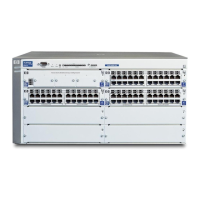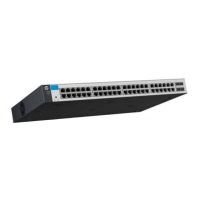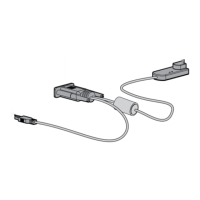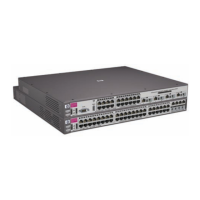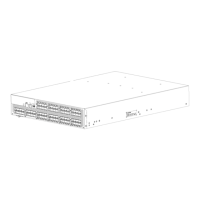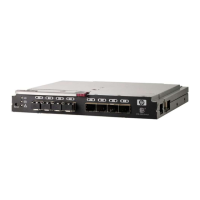11-10
Optimizing Port Usage Through Traffic Control and Port Trunking
Port Trunking
Ports: Traffic Control
and Trunking
Port Trunking
Port Status and ConfigurationFeatures
Port trunking allows you to assign up to four physical links to one logical link
(trunk) that functions as a single, higher-speed link providing dramatically
increased bandwidth. This capability applies to connections between back-
bone devices as well as to connections in other network areas where traffic
bottlenecks exist. A trunk group is a set of up to four ports configured as
members of the same port trunk. Note that the ports in a trunk group do not
have to be consecutive. For example:
Figure 11-5. Conceptual Example of Port Trunking
With full-duplex operation in a four-port trunk group, trunking enables the
following bandwidth capabilities:
Table 11-2. Bandwidth Capacity for Trunk Groups Configured for Full-Duplex
Feature Default Menu CLI Web
viewing port trunks n/a page 11-16 page 11-18 page 11-24
configuring a static trunk
group
none page 11-16 page 11-21 —
configuring a dynamic LACP
trunk group
LACP passive — page 11-23 —
10 Mbps Links 100 Mbps Links 1000 Mbps Links
2 Ports Up to 40 Mbps Up to 400 Mbps Up to 4000 Mbps
3 Ports Up to 60 Mbps Up to 600 Mbps Up to 6000 Mbps
4 Ports Up to 80 Mbps Up to 800 Mbps Up to 8000 Mbps
Switch 1:
Ports c1 - c4
configured
as a port
trunk group.
The multiple physical links in a trunk behave as one logical link
port c1
port c2
port c3
port c4
port c5
port c6
port c7
. . .
port n
port a1
port a2
port a3
port a4
port a5
port a6
port a7
. . .
port n
Switch 2:
Ports a3 - a6
configured as
a port trunk
group

